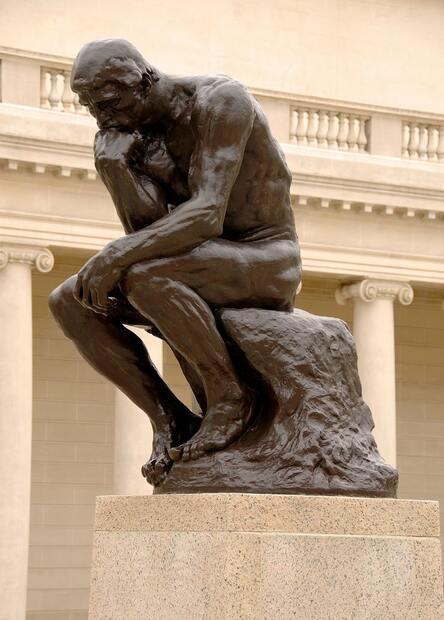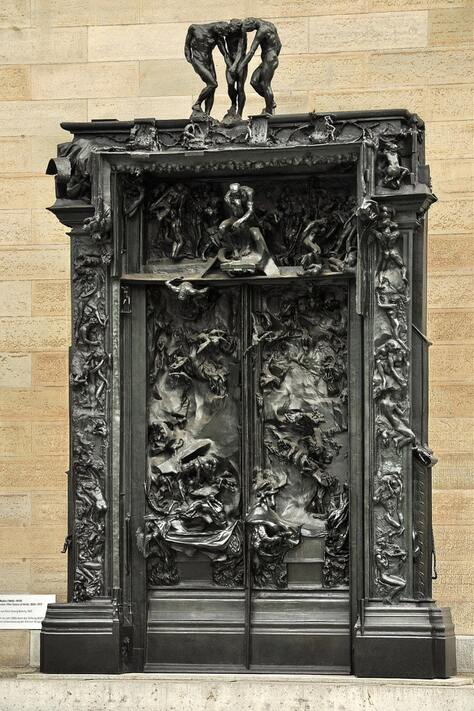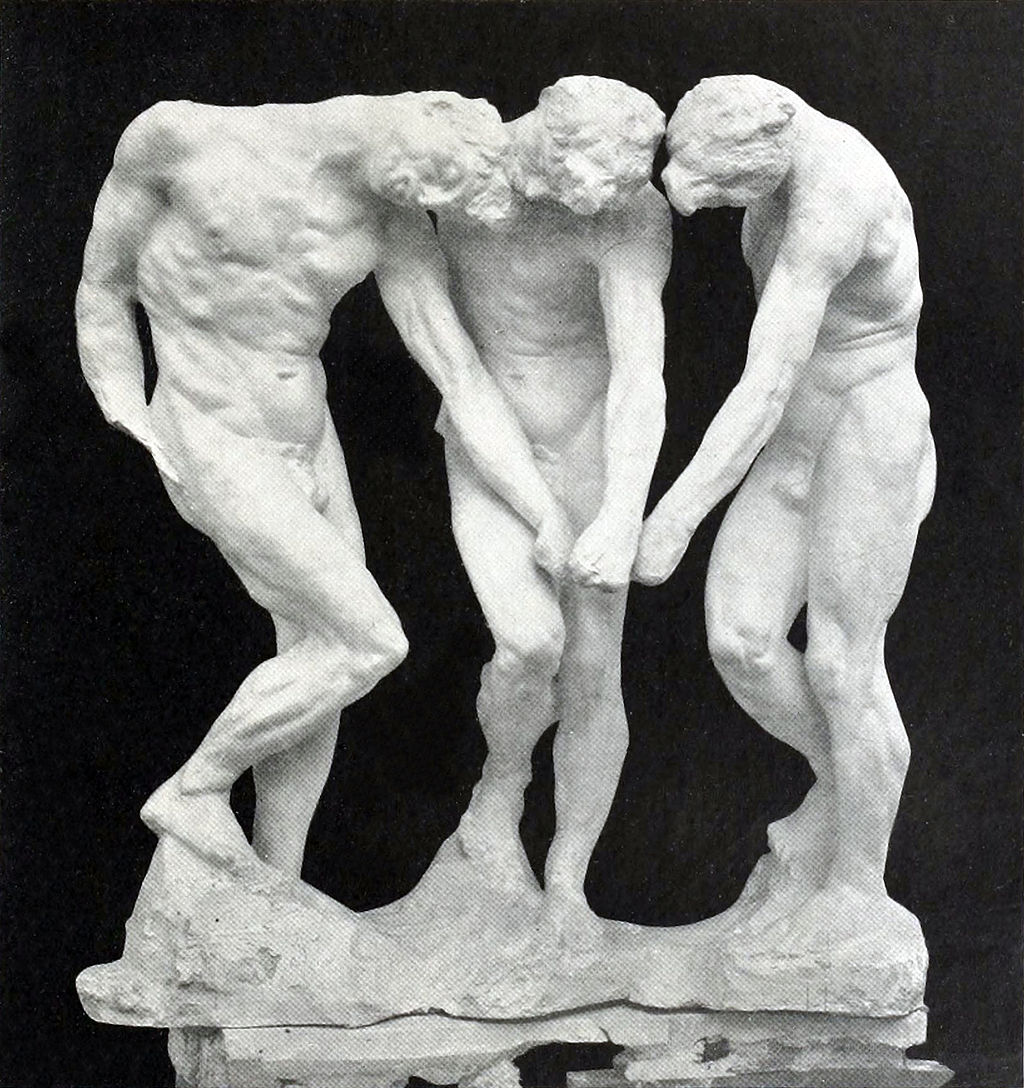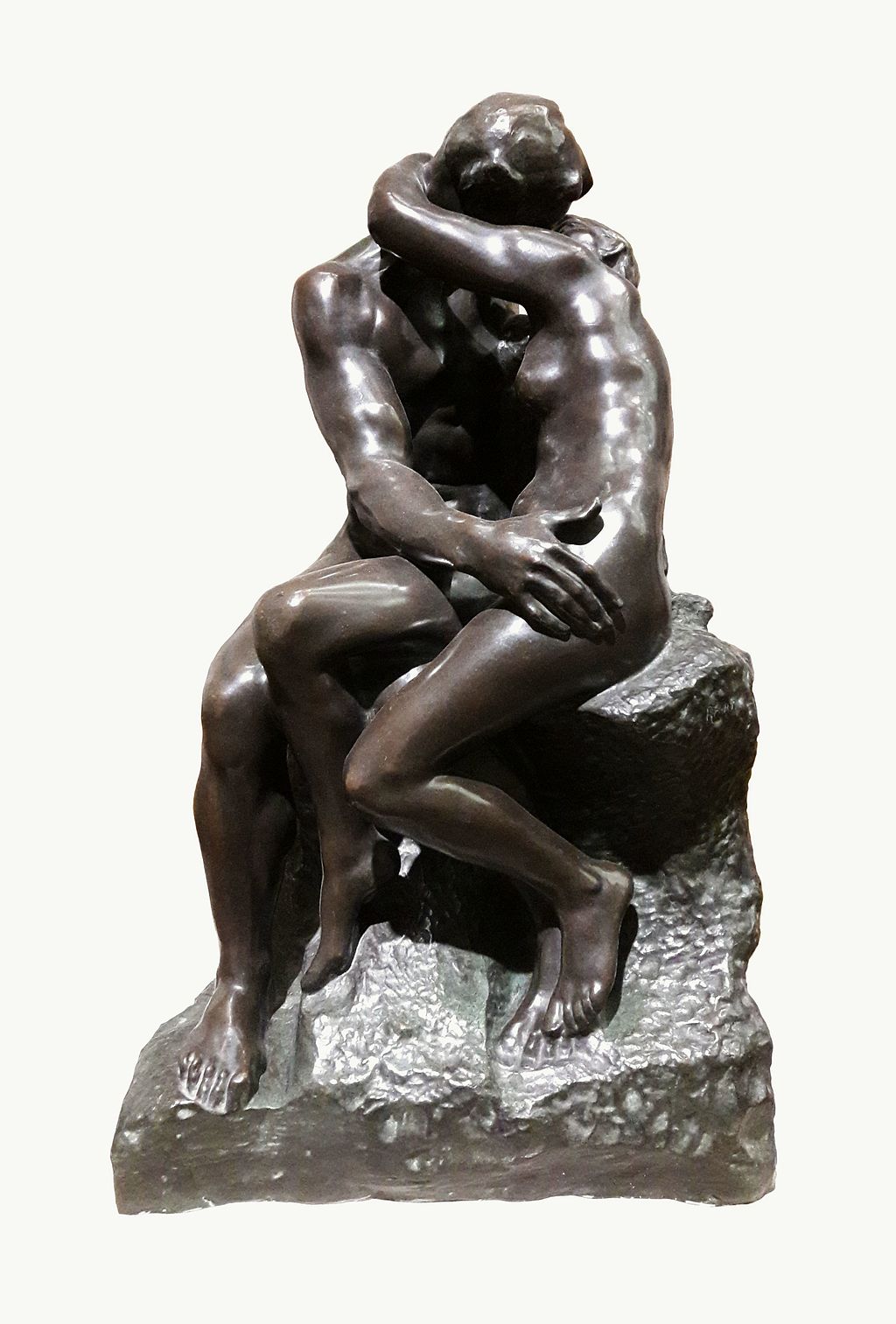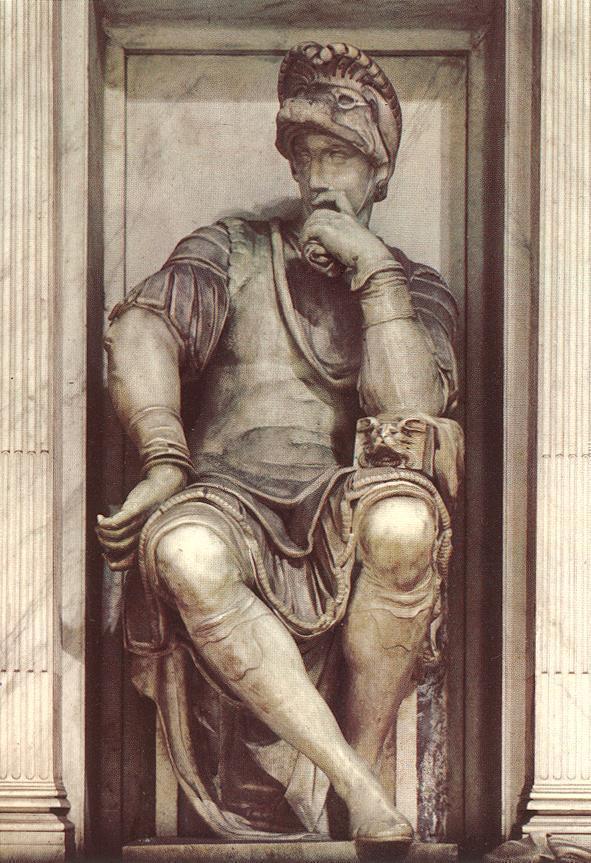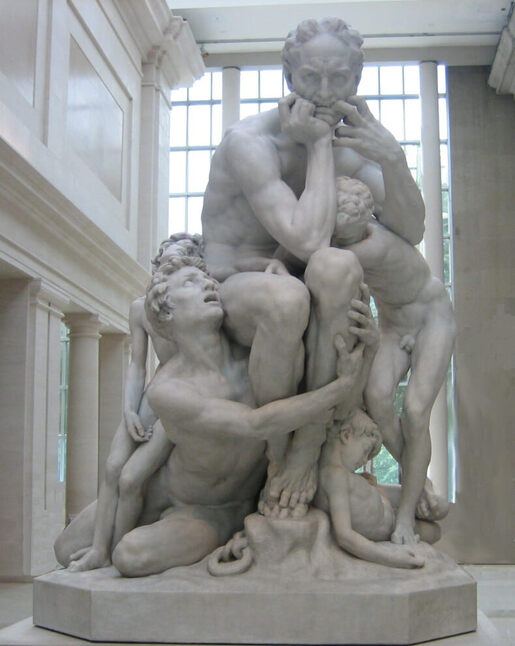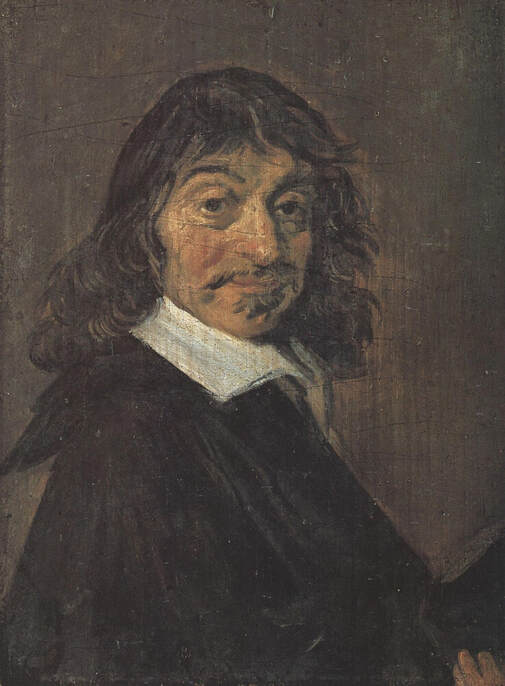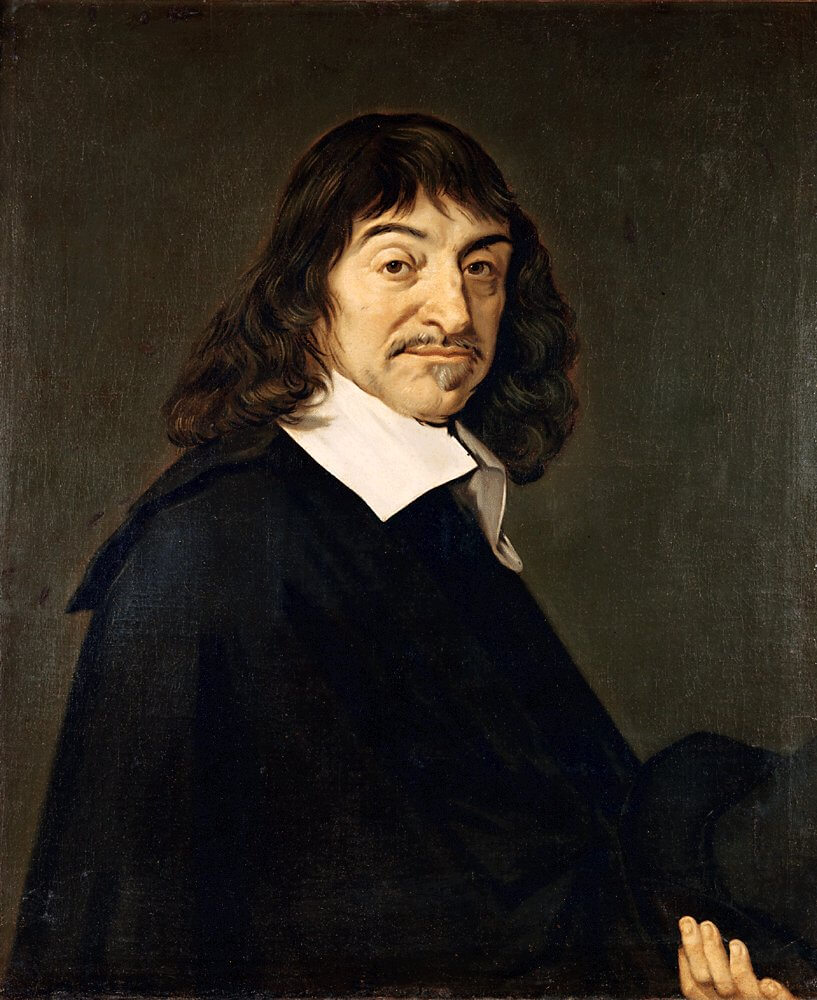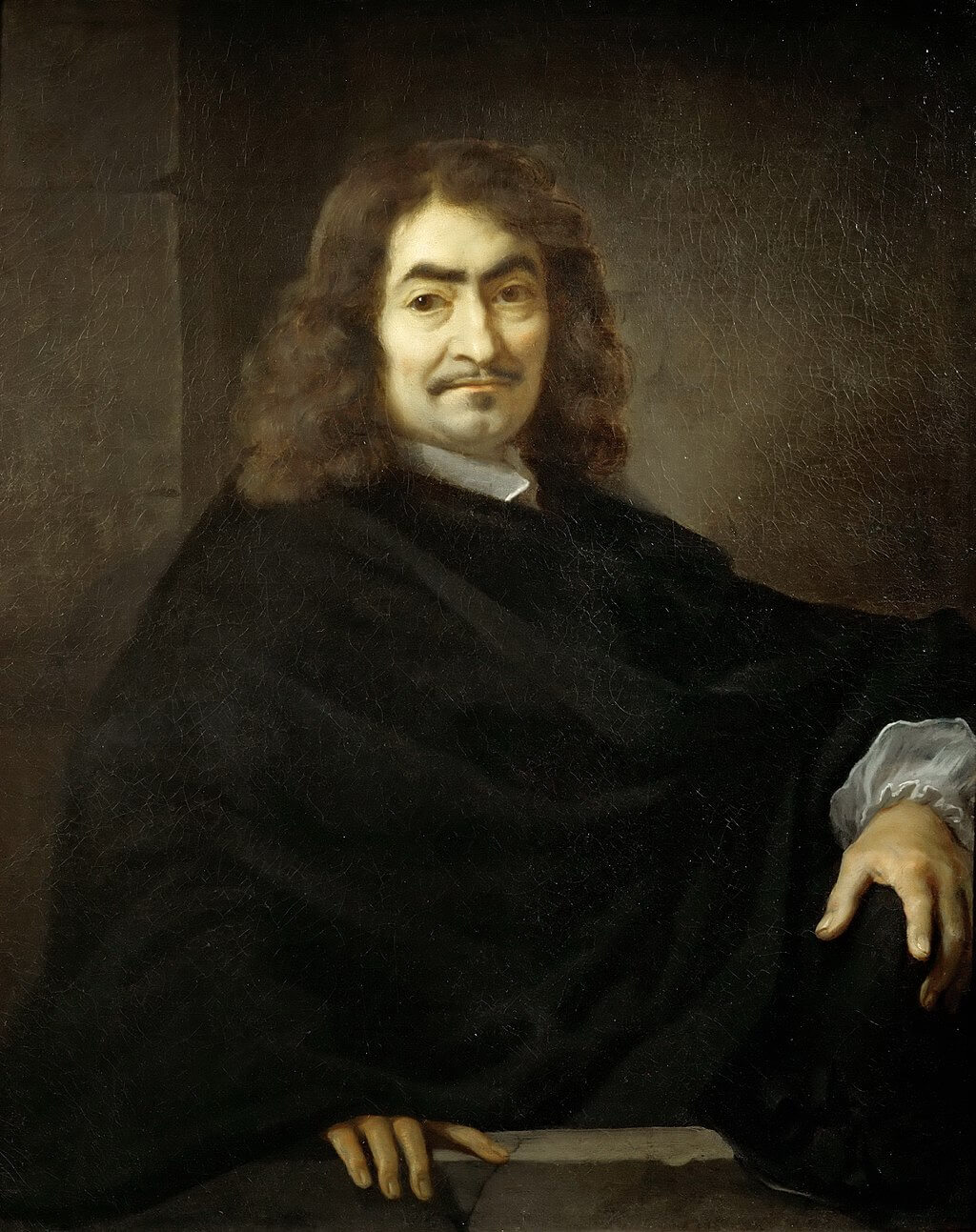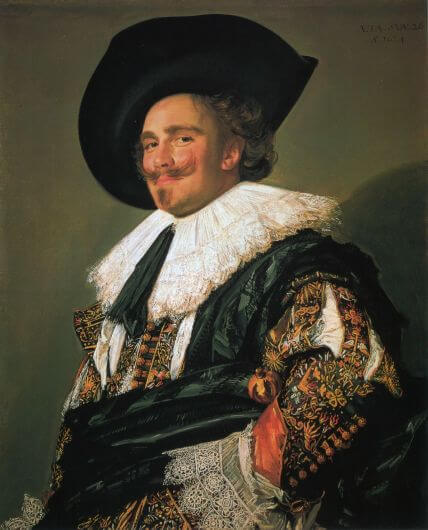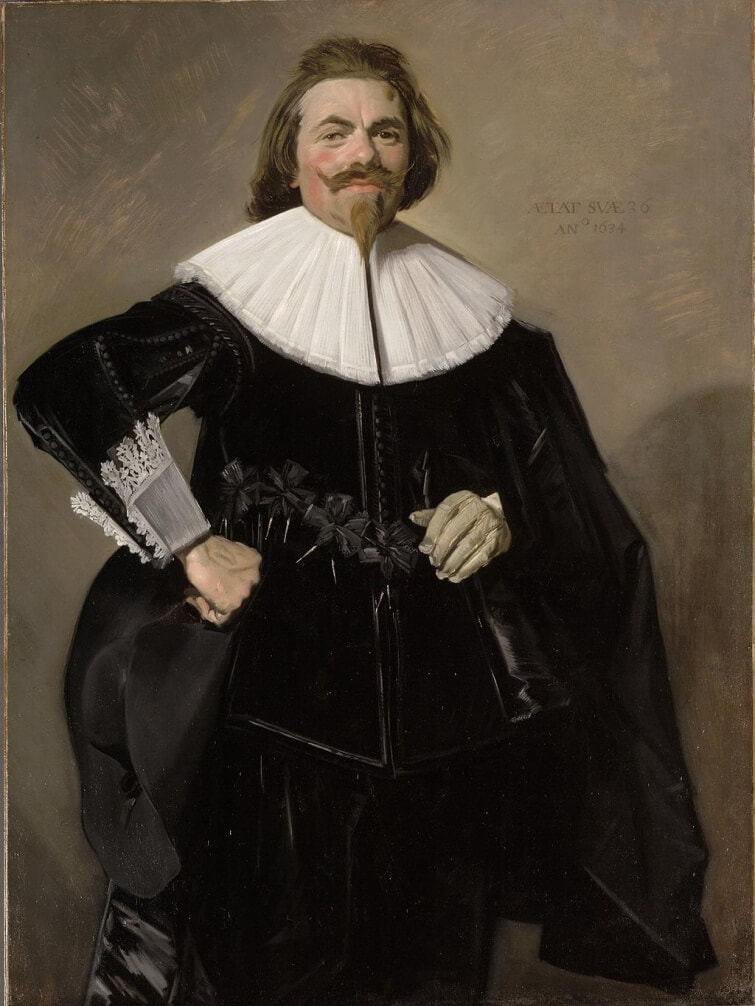|
Where?
When? Rodin created the original sculpture in 1881. He created the first monumental-size sculpture in 1903 and after this many casts of the sculpture have been created, even after his death in 1917. What do you see? A sculpture of a muscular, naked man sitting on a rock. The man is in deep thought and uses his whole body to think. His head is bent forward and leans on his right hand. His wrinkled face, knitted eyebrows, swollen nostrils, compressed lips, and absent-minded gaze reinforce the idea that the man is deep in his thoughts and is completely unaware of the world around him. The man is struggling with his thoughts with every part of his body. Almost no part of his body is relaxed. Most muscles are tense, which is clear by looking at the clenched fist, the arched back, the legs below his body, and the squeezed toes. The statue is over six feet tall making the figure larger than life. It was the intention of Rodin to put the independent sculpture on top of a pedestal such that it would make a colossal impression on the viewers. Backstory: In 1880, Rodin received a large commission from the Directorate of Fine Arts in France to create the entrance doors for a new museum that was to be built (but never opened in the end). He was given the freedom to choose his own theme and decided on creating a scene from Dante’s book Inferno. Rodin was supposed to finish the project in five years but continued to work on the project for 37 years until his death in 1917. The doors – named The Gates of Hell – would eventually include a total of 180 different figures, and they would form the basis for many of Rodin’s most famous statues. Rodin originally created all figures in plaster, and the doors were then to be cast in bronze. The central and the most important part Rodin created for these doors was the statue of The Thinker (Le Penseur in French) who sits right above the two doors with all the characters from the Inferno behind him. The statue was about 27 inches (70 cm) high.
Multiple versions: The statue of The Thinker can be found all around the world. Rodin created the first version of this statue in plaster in 1881. In 1903, he completed the first monumental-size version of this statue. He considered it to be a remarkable piece and wrote to the client of his first bronze casting that he would ensure that only a few copies of the statue would ever be made. However, he did not keep his word.
During Rodin’s life, already more than 20 versions of The Thinker were produced. And after his death, the right for reproduction was turned over to the Republic of France. Nowadays, more than 70 bronze and plaster versions exist and are on display in Asia, Australia, Europe, North America, and South America. Interpretation: There are various interpretations of what and who The Thinker represents. When initially creating this statue as part of The Gates of Hell, Rodin meant the figure to represent Dante pondering about the fate of the damned people entering through the Gates of Hell. This interpretation is based on Dante’s book Inferno, the first part of his trilogy known as The Divine Comedy. When Rodin started to create independent versions, he started to consider different interpretations. Overall, he considered the statue to represent the struggle of the human mind. But he also started to see hope in it. The thoughts slowly become clear, and the man turns from a thinker, into a dreamer, and finally into a creator. Over time, other interpretations have also been given. Some consider the statue to represent Rodin himself. Others interpret the figure as Adam contemplating the sin he committed in Paradise. Who is Rodin? François Auguste René Rodin was born in 1840 in Paris, where he died 77 years later in 1917. He was rejected three times by the leading art school in Paris, the École des Beaux-Arts. It forced him to educate himself differently and this has contributed to his unique style. He was inspired by some of the great Renaissance sculptors like Donatello and Michelangelo. Most of Rodin's famous sculptures were originally intended for his commission of The Gates of Hell. Over time, he realized that he could turn many elements of The Gates of Hell into separate statues and some of these statues have achieved world fame. Among them are The Three Shades and The Kiss. Many of Rodin’s statues have been cast multiple times in bronze which means that his statues have spread across the world.
Why a bronze statue? Bronze is a combination of different metals. It consists primarily of copper (typically 85-90%) and tin (typically 10-15%), but can also contain minor quantities of other metals or nonmetals. It is an attractive material for sculptors for the following reasons.
Fun fact: While The Thinker is one of the most famous statues in the world, Rodin initially named this statue “the poet.” Later it was renamed based on suggestions by foundry workers that the sculpture was quite similar to a sculpture by Michelangelo on Lorenzo de’ Medici, Duke of Urbino. This sculpture was more popularly known as “Il Penseroso” (The Thinker), and this name was also given to Rodin’s statue. The Thinker also shows some resemblance to Ugolino and His Sons which was created by Jean-Baptiste Carpeaux in the 1860s.
1 Comment
Where? Gallery 210a of the Statens Museum for Kunst When? 1649 Commissioned by? Probably Augustijn Bloemaert, a Catholic priest and friend of Descartes. What do you see? A portrait of the 17th-century French philosopher René Descartes. Hals paints him in three-quarters view. Descartes looks at the viewer with a confident, thoughtful, and inquisitive expression. The fingers of his left hand are visible in the bottom right. He holds his had in this hand. Someone has scratched this portrait by Hals after he completed it. There are zigzagging scratches in Descartes’ face. Probably this was done by someone who did not agree with some of the revolutionary ideas of Descartes. Backstory: In 1648, while Descartes lives in the Dutch Republic, Queen Christina of Sweden invites René Descartes to Sweden. Descartes accepts the invitation but does not move right away to Sweden. One of Descartes’ Dutch friends is the Catholic priest Augustijn Bloemaert. He is afraid that he may never see his friend again and invites Descartes to Haarlem where he lives. Being familiar with Frans Hals, Bloemaert commissions Hals to paint a portrait of Descartes. However, Descartes does not have much time to sit, and Hals needs to paint the portrait quicker than he usually does. He decides to use a small wooden panel of 5.5 x 7.5 inch (14 x 19 cm). It is the smallest painting he created during his life that was not on a copper background. Other Portraits of Descartes: Several versions of Hals’ portrait of Descartes are known, though Hals has painted only one of them and the rest are copies. One of those copies hangs in the Louvre. For a long time, the Louvre thought that they owned the original portrait by Hals, but nowadays the majority of art experts believes that the original is in the Statens Museum for Kunst in Copenhagen. Hals was not the only one who portrayed Descartes. Between 1642 and 1649, the French painter and engraver, Sébastien Bourdon, also painted a portrait of Descartes. Compared to the painting of Hals, Bourdon’s portrait is static and lifeless. It is not surprising that Hals’ portrait of Descartes is the portrait that most people have in mind nowadays when thinking of Descartes.
Who is Descartes? René Descartes (1596 – 1650) is one of the greatest philosophers and scientists ever. He was born in France and lived in the Dutch Republic between 1628 and 1649.
In 1641, he published his influential book Meditations on First Philosophy. In this book, he figures out what can be known for sure. Descartes describes that people cannot trust their senses. People acquire knowledge through their senses, but they can be deceiving. Descartes asks himself questions about all sorts of beliefs, and if he even finds the slightest amount of doubt, he removes that belief from his mind. The result of that exercise is that only mathematics is true. Using that base level of knowledge as a starting point, he starts to build up his knowledge again. He argues that a person has to exist by writing “cogito, ergo sum” (I think, therefore I am). Through the publication of this book and his other books, Descartes became one of the most influential philosophers ever. Who is Hals? Frans Hals was born by the end of 1582 or early 1583 in Antwerp, Belgium. He died in 1666 in Haarlem, The Netherlands. He was a very talented and productive painter. About 80 percent of his works consists of portraits, among which The Laughing Cavalier from 1624 in the Wallace Collection and his 1634 Portrait of Tieleman Roosterman in the Cleveland Museum of Art. Hals had a loose painting style, which means that he used relatively few brush strokes to depict something. You can often see the brush strokes in his paintings and particularly so in his Portrait of René Descartes.
Fun fact: Soon after Hals portrayed Descartes in 1649, Descartes leaves for Stockholm to teach Queen Christina of Sweden. Descartes has to wake up very early there to teach the queen at five in the morning. This made him fairly miserable because Descartes was used to waking up late, around noon, most days. The reason was that he believed that the best thinking could be done while in bed.
At a young age, Descartes already convinced his teachers that he should only leave bed very late. He was often sick, and some extra sleep was beneficial to his health. He used this time in the morning to think and reflect on his ideas. Descartes’ time in Sweden was not successful. Besides his early mornings, the Swedish Winter had a negative impact on his health, and he died in February 1650. Interested in a copy for yourself? Poster |
Categories
All
|
- Home
- Blog
-
Museums
- Alte Pinakothek
- Art Institute of Chicago
- Baltimore Museum of Art
- Barber Institute of Fine Arts
- Bargello
- Barnes Foundation
- British Museum
- Church of Sant’Anastasia
- Cleveland Museum of Art
- Courtauld Institute of Art
- Detroit Institute of Arts
- Frans Hals Museum
- Galleria Borghese
- Gallerie dell'Accademia
- Getty Museum
- Guggenheim
- Hermitage Museum
- Kunsthistorisches Museum
- Kunstmuseum Basel
- Legion of Honor Museum
- Louvre
- Mauritshuis
- Metropolitan Museum of Art
- Musee d’Orsay
- Museum of Fine Arts in Boston
- Museum of Modern Art
- National Gallery in London
- National Gallery of Art
- National Museum in Poznań
- Norton Simon Museum
- Ny Carlsberg Glyptotek
- Palace of Versailles
- Palazzo Pitti
- Palazzo Vecchio
- Petit Palais
- Philadelphia Museum of Art
- Prado
- Pushkin Museum
- Ravenna Art Museum
- Rijksmuseum
- San Diego Museum of Art
- Santa Maria delle Grazie
- St. Peter's Basilica
- Städel Museum
- Statens Museum for Kunst
- Tate Britain
- Tate Modern
- Timken Museum of Art
- Uffizi
- Vatican Museums
- Wallace Collection
-
Artists
- Altdorfer
- Anguissola
- Berlin Painter
- Bosch
- Botticelli
- Boucher
- Bronzino
- Bruegel the Elder
- Brunelleschi
- Cabanel
- Caillebotte
- Canova
- Caravaggio
- Carpeaux
- Cezanne
- Cimabue
- David
- Degas
- Delacroix
- De Maria
- Donatello
- El Greco
- Fontana
- Fra Angelico
- Fragonard
- Gauguin
- Gentileschi
- Gericault
- Gonzalez-Torres
- Goya
- Hals
- Hogarth
- Hokusai
- Ingres
- Leonardo da Vinci
- Lippi, Filippo
- Longhi, Barbara
- Lorrain
- Makovsky
- Manet
- Massys
- Matisse
- Merian
- Michelangelo
- Mochi
- Modigliani
- Monet
- Panini
- Parmigianino
- Perugino
- Picasso
- Pisanello
- Raphael
- Rembrandt
- Renoir
- Reynolds
- Rivera
- Rodin
- Rubens
- Scultori
- Seurat
- Steen
- Tintoretto
- Titian
- Toulouse-Lautrec
- Turner
- Uccello
- Van der Weyden
- Van Dyck
- Van Eyck
- Van Gogh
- Van Hemessen
- Vasari
- Velazquez
- Vermeer
- Veronese
- Vigée Le Brun
-
Locations
- Books
- About Us

